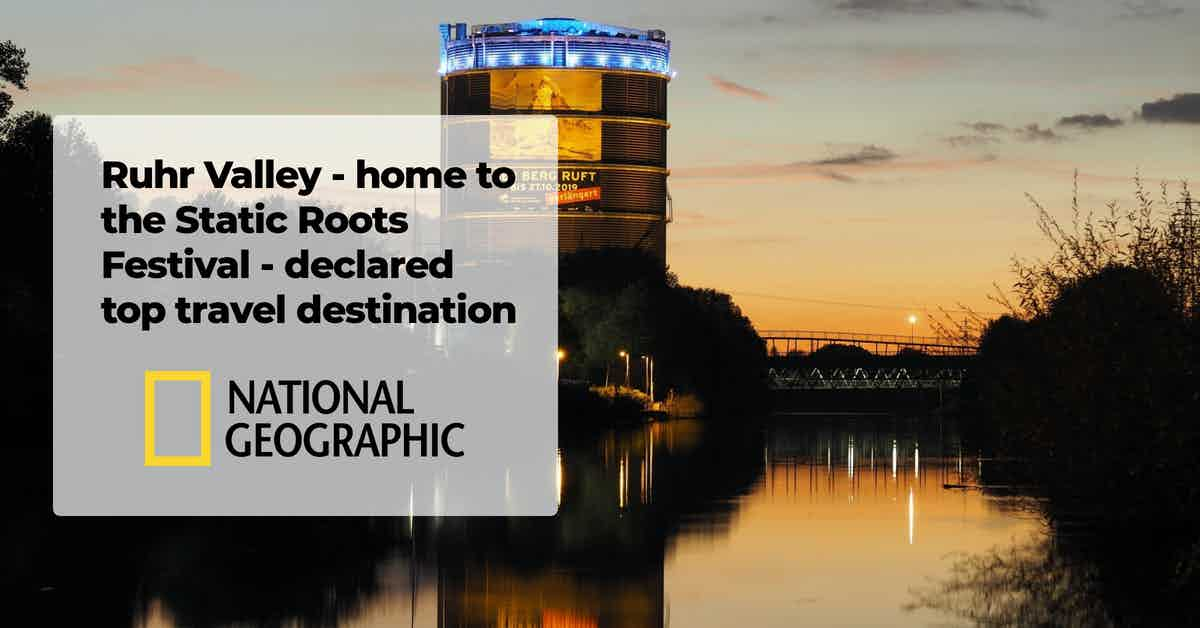
One more reason to visit the Static Roots Festival, Germany's only Americana music festival
Living in the Ruhr Valley is quite the experience. You can have everything from busy city life to hiking in the beautiful outdoors, there are shopping centers and river rafting, word class sports events, world heritage sites, and tons of tiny little pearls all over the place. We are absolutely in love with the Ruhr Valley. As participant in one of our StaticRuhrTours (here and here) you already knew that since we've taken you to some of the places mentioned in the article.
National Geographic just recently released the planet's 25 most exciting destinations for 2022 and the Ruhr Valley has become one of these destinations next to locations like Lake Baikal (Russia), Namibia (Africa), Victoria (Australia). Check out, what National Geographic says about the Ruhr Valley:
Get creative. Mining and steel production once dominated the densely populated Ruhr Valley, located in Germany’s western state of North Rhine–Westphalia. Today, the region is repurposing former slag heaps (mounds of mining waste) and postapocalyptic-looking industrial sites as parks and open-air cultural spaces.
The most famous is the World Heritage site of Zeche Zollverein (Zollverein Coal Mine Industrial Complex), home to an outdoor swimming pool, ice rink, and walking trails. “People visiting the Ruhr area are usually impressed by the abundance of green,” says Karola Geiss-Netthöfel, director of the Ruhr Regional Association.
Zollverein is part of the wider Emscher Landscape Park, an east-west system of green spaces and corridors covering nearly 175 square miles. Rent a bike in Essen for a car-free Ruhr Valley trip along cycling routes, many of which follow former railway tracks. Or explore on foot via the 96-mile-long Hohe Mark Steig, a trekking trail opened in 2021.
“The trail combines nature and industrial culture in a unique way, as you pass by several industrial buildings,” says Geiss-Netthöfel. A top spot nearby: Halde Hoheward, elevation 495 feet, a mountainous slag heap made from 180 million tons of mine waste and topped with a giant sundial. —Franziska Haack, National Geographic Traveler Germany
